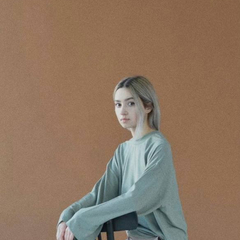How we show people and context
If the layout contains more than just a product, we aim at creating a realistic context: we show real people, recognizable situations and natural emotions. We avoid fantasy scenes, staged shots and idealization.
People and context
Food is just food. Much more important are the people who come into contact with it. These are real people, with clear motivations and emotions, who find themselves in life situations that can be easily recognized.
-
Talk about products through people. Tell about recipes inspired by our guests. Show the real chefs creating their specialties. "The one and only recipe" from a popular or fictional chef is not our story.
Dodo

Showing Kostya, the real chef Not Dodo

The phrases "sensational novelty" and "changes the idea of pizza" inflate expectations. The character's posture looks unnatural Create a realistic context. Put yourself in a layout character place: could you happen to be in a situation like this? And what about your family member? Or your neighbor? We explore our guests’ life experience and implement it in our creative products. Our characters have natural emotions and solve non-fictional problems.
Connect the plots on the layouts to real life. If we use exotic products in a recipe, tell about the product as a way to dilute everyday life. Don't offer fairytale pictures as a way to escape reality (e.g. a mango shake in the sand on the beach).
Dodo

The character solves his everyday tasks with the help of our app 
The layout shows a recognizable situation: the character in a cozy environment drinking a hot beverage. The posture looks natural Not Dodo

The layout is overly exotic: palm tree, mango, sand, sunglasses. A situation that stands too far from reality 
Character is portraying exaggerated emotion. The reaction is unrealistic -
Show real people. The characters on our layouts and video clips are people of different jobs, wealth, age; of various ethnic groups and body types. Each character has their own charisma, and we truly embrace it.
Dodo




Real people in whom you can recognize yourself or someone you know Not Dodo

A girl with an open box standing in the middle of the street, holding something in her both hands. The shot looks staged 
The character has an unnatural facial expression, the layout is overloaded, the plot is not comprehensible. It is impossible to recognize oneself in a situation like this
Product and context
Pizza is a part of everyday life. We don't display it as an award or a highlight, we don't elevate it to a cult or idealize it. You don't need a special occasion for having a pizza. To eat, to feed, to treat - these are our customer’s daily tasks. Hedonism is not our territory.
Put the food into the context. Show food as part of a person's lifestyle, in real situations of consumption: lunch at the office, dinner with friends, a snack in the park. Or place the product on a minimalistic, calm background.
Dodo


Not Dodo


Read next:

